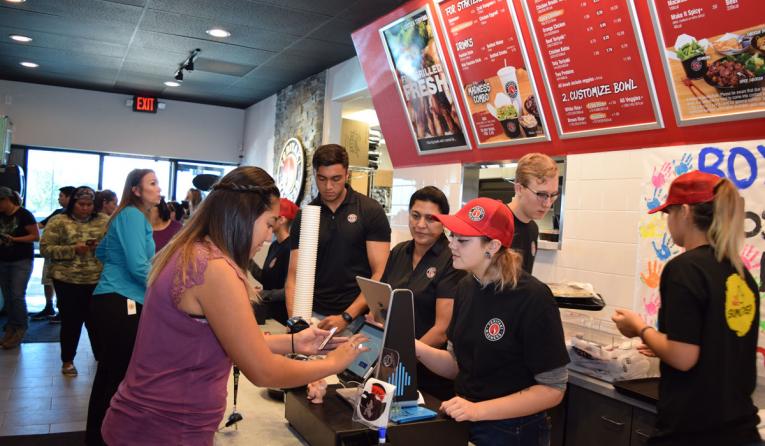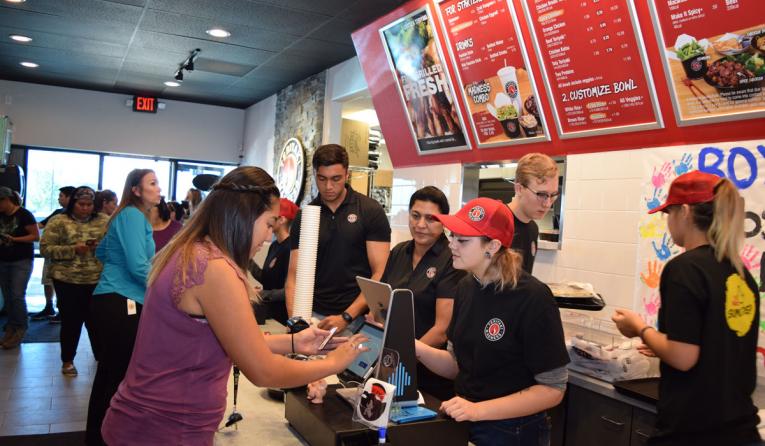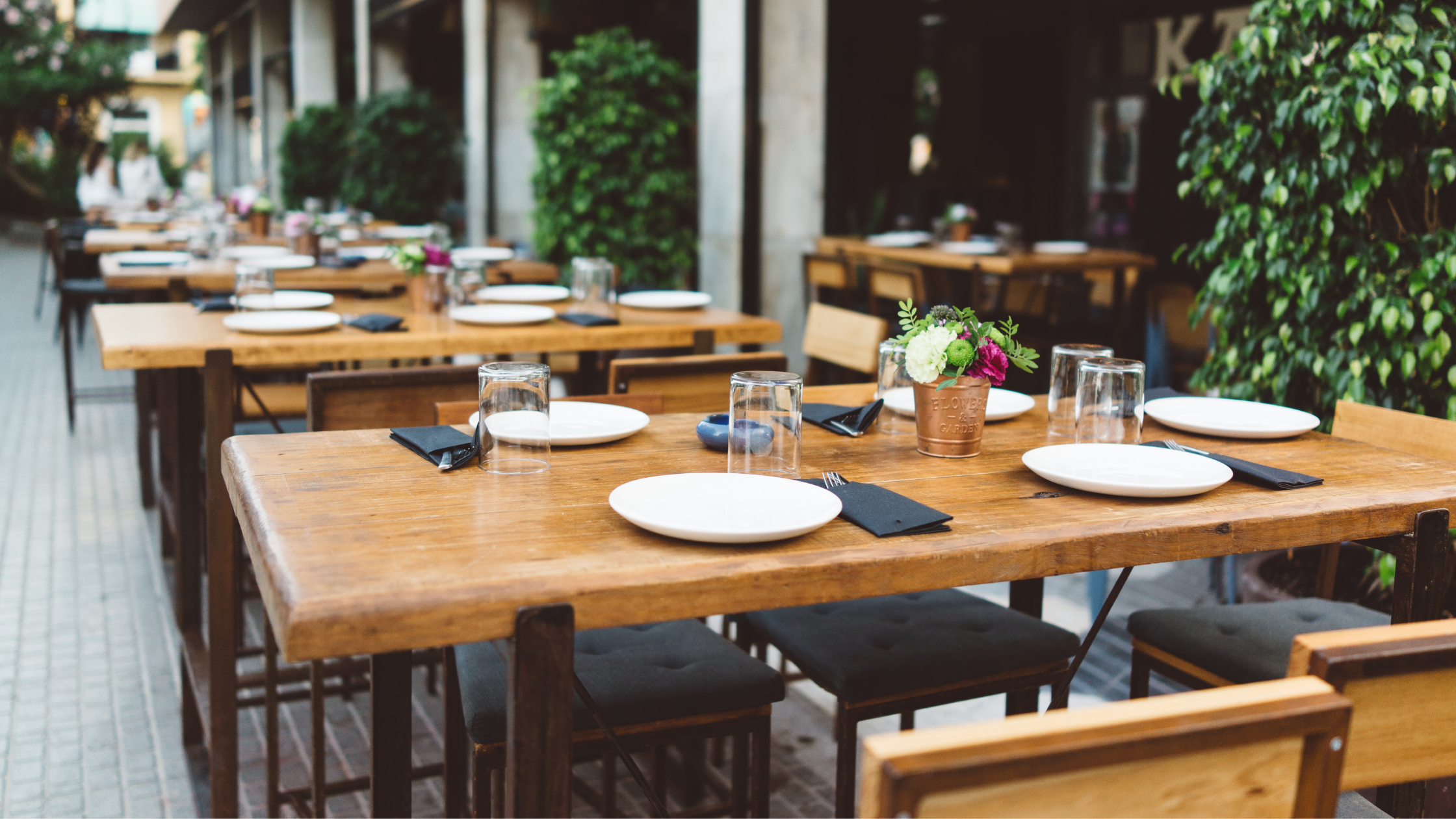Call Sales: +1 (833) 437-3835
Call Sales: +1 (833) 437-3835
Coral Drake | November 30, 2022 |

Years ago, when people thought about going out to eat, they thought about being led to a table where they were taken care of by a server throughout the meal. Increasingly, eating out means ordering at a counter and seating yourself or leaving with takeout containers.
Across the country, dining rooms are closing and being replaced by more extensive counter-serve options. Why are so many restaurants doing away with their dining rooms? Is it a good option for your restaurant? Here's what you need to know about why counter-service is replacing dining rooms to help you decide.
While the traditional dining room has certainly survived the pandemic, it took some damage as the world braced for health-conscious adjustments. People learned new ways of eating out and socializing during the long months when most restaurant dining rooms were closed. While plenty of patrons were happy to go back to restaurant dining rooms once they were able, many people weren't ready to go back to the traditional dining experience.
After all, when you're accustomed to food being available whenever you'd like to go pick it up, it can be hard to return to scheduling reservations or waiting for a table. Counter service offers a great alternate solution, enabling people who miss going out but aren’t willing to commit to the old-fashioned dining room experience to dip their toes into dining out as much as they like.
Patrons can come, check out the crowd at the counter, order their food, and take it to go or stay and eat it. This kind of flexibility is highly desirable for appealing to post-Covid habits.
From fast food restaurants like Taco Bell introducing takeout only restaurant concepts to restaurants reducing dining room hours while extending counter service, it's clear that people are eating faster and on their own schedule. Fast food restaurants can do away with the dining room because they know that most people just want to pick their food up in their cars and drive away with it.
Restaurants can reduce dining room hours because they are finding that more patrons want to come in without reservations and seat themselves immediately. It seems that many diners don't mind if this convenience comes without the comfort of table service.
People may not want to make reservations, wait for a seat, and sit in a dining room as much as they once did, but they aren't ready to give up the social connection offered by dining out, either. An argument can be made that the dining room is a “third place” in society, offering an intimate, everyday connection place other than home or work where people can connect with one another.

However, a dining room really isn't necessary for this kind of connection. Intelligently designed restaurants enable plenty of seating at a counter and self-seat tables instead of an extensive dining area.
Lots of outdoor seating and activities to make it a fun place to hang out encourage people to mingle and connect just as they would in a dining room. In fact, the tendency of groups to mingle in an environment like this often creates an even more social and intimate space than a traditional dining room.
Maintaining a dining room is one of the most expensive and challenging aspects of managing a restaurant. It's frustrating to staff an entire dining room and then only fill up a quarter of it. On the other hand, counter service can be maintained with significantly fewer staff. The fluidity of self-seat and take-out options means that when the restaurant gets busy, the patrons will move around as needed or take their food to go as they like, rather than having a line out the door waiting for seating in the dining room.
A single room for counter service, bar service, and self-seating tables is much easier to maintain. Not only that, but the smaller space is also less real-estate to invest in initially. Staff may need to work a little bit harder to deal with the demands of counter service and take out, but they will get a much higher percentage of tips as a result. This means that restaurants can employ fewer, but more capable employees, which tends to make a restaurant run more smoothly.
The entire restaurant industry is experiencing a labor shortage. It's harder than ever to get people to wait tables and keep doing it long enough to get over the learning curve. Many restaurants are finding themselves having to close their dining rooms not because they want to, but because they simply can't find the staff to keep them open. When there isn't enough staff to keep the dining room open, counter service is a great natural alternative.
Many restaurants aren't getting rid of their dining rooms, but rather, are finding that the doors are closed more and more often. As patrons get used to going to the counter service portion of the restaurant, they become less likely to seek out the dining room when it is available. This creates a cycle in which the dining room is used less and less. When it comes time to remodel, many of these restaurants may decide to do something else entirely with the dining room area.
With all of these arguments to replace your dining room with counter service, you may be wondering what advantages there are to having a dining room. There are absolutely some good reasons to have a dining room which are worth consideration if you are thinking about making the switch.
If you have an upscale restaurant with expensive menu items, you're likely to find it a lot harder to make the switch to counter service without losing business than more laid-back restaurants. Americans are overwhelmingly moving more towards takeout and counter service for everyday eating out. However, when it comes to a fancy meal for a special occasion, fine dining demands a formal dining room complete with fragile glassware and polite waiters offering wine lists.
 They May Encourage Customers to Order More
They May Encourage Customers to Order MoreThe experience of sitting in a dining room tends to encourage patrons to keep thinking about ordering more. With counter service, however, it is relatively unlikely for patrons to order an appetizer, a meal, and a dessert. It is much more likely that they will simply order something to snack on or just a main course.
If your restaurant relies heavily on upselling or encouraging patrons to stay longer and order more, you may not want to give up the dining room. One solution can be to make counter service compelling enough that customers stick around. Offering music or trivia night, providing games or activities, or otherwise developing an environment that encourages people to hang around until they get hungry again can help you to sell more without having a dining room.
For some restaurant owners, particularly those who come from a heritage in the restaurant industry, the thought of doing away with the dining room is inconceivable. Since restaurants developed in the 1700s, the dining room has been crucial. A dining room has been intrinsic to how restaurants work for so long that it can be difficult to imagine doing it any other way.
If your restaurant is thriving with lots of patrons filling up the dining room, it's true that switching to counter service may be a serious hit to your business. While some restaurants were able to adapt to take-out and pick-up during the pandemic, many others were not able to survive without the dining room. Counter service certainly isn't perfect for every restaurant, and it's very unlikely that the dining room is going to be gone for good anytime soon.
If your dining room is costing your restaurant too much money or you are struggling to find staff for it, you may be wondering whether counter service is a legitimate replacement for the dining room. For thousands of restaurants, counter service is replacing dining rooms successfully and patrons appear to be thrilled.
However, doing away with the dining room certainly isn't the right choice for every restaurant. Think carefully about how you use your dining room and how your restaurant would adapt to fewer dining room hours or no dining room.
Talk to your staff and loyal patrons about how they would respond to replacing the dining room with counter service. Remember, you don't have to demolish the dining room right away. Try reducing dining room hours while increasing staffing of the counter service and see how your restaurant and customers respond.